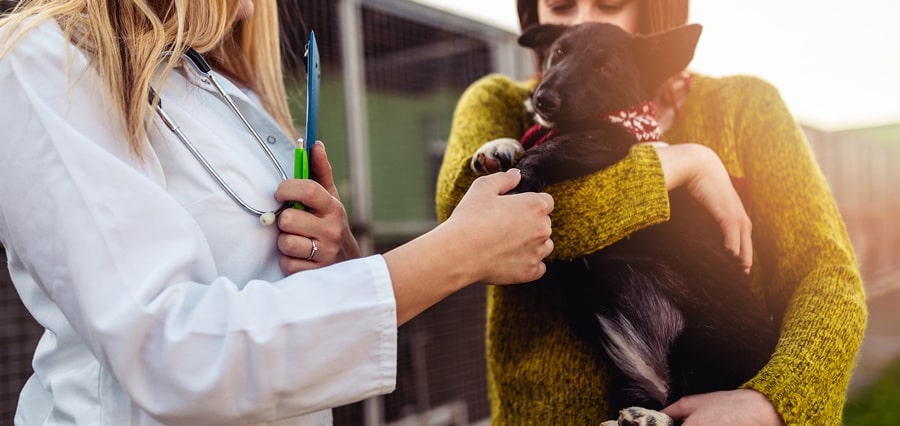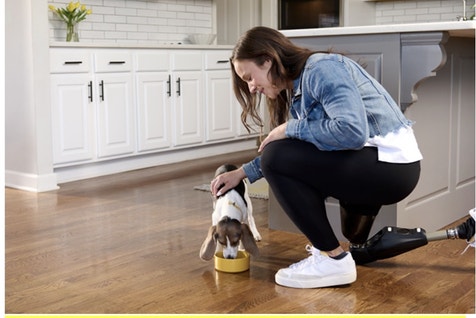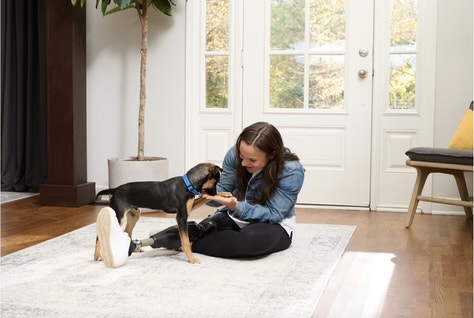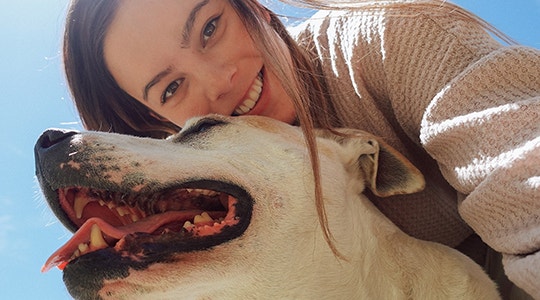
How to Adopt a Dog: Your Ultimate Guide
So you’re thinking about adopting a dog — that’s wonderful! You’re about to embark on a journey of supporting, caring for and providing a loving home to a pup in need. In return, you’ll get unconditional love, unlimited snuggles and all the kisses and tail wags you could ask for!
Before inviting a new best friend into your home, you may have a lot of questions on what to consider, how to prepare and where to start. Caring for a dog at any age is a big (but rewarding!) commitment — so everyone can benefit from understanding the dog adoption process to find the best fit for their home.
Check out our dog adoption guide to help you along the way. You can use the links below to navigate or just read along. If you feel confident you’re ready to adopt after reviewing this article, you’re probably a good fit for a new pup!
- Prepare for Adopting a Dog (opens in new window)
- What to Buy When Adopting a Dog (opens in new window)
- Other Dog Adoption Considerations (opens in new window)
- What Dog Should You Adopt? (opens in new window)
- What Can You Expect at the Dog Shelter? (opens in new window)
- Dog Adoption Questionnaire (opens in new window)
- Next Steps (opens in new window)
Prepare for Adopting a Dog
Before you head to the shelter, it’s a good idea to make a plan, research and prepare. Whether you live alone or with others, a lot of factors will change once you adopt your new furry friend. Think over (and discuss!) what potential new responsibilities and commitments will come with them. To make the transition as smooth as possible, purchase items your pup will need beforehand.
The first step of your journey is to consider how you want a dog to fit into your life. Adopting a dog is not only a long-term financial commitment, but an emotional and physical commitment, too. It’s helpful to talk over your expectations, goals and responsibilities with fellow caretakers and housemates if you have them. If you plan on adopting a dog alone, it’s still extremely important to assess the situation and make a plan before you start looking at potential new best friends. Here are some important topics to think over and/or discuss:
- What responsibilities are involved, and how will we divide the workload? Talk with family members or those you live with about how the pet-care responsibilities will be divided — both day-to-day (like getting regular exercise, training, feeding schedule and playtime) and long-term (maintaining regular vet visits, dog care during vacations or while at work, or moving homes in the future). Don’t forget to consider the financial investment up front and long-term. Pet-care costs vary based on location, price of living and pet needs, so the best option is to build your own budget before you make any financial commitments.
- What kind of dog might be a good fit in our home? Because every dog is different, this means getting specific about what kind will and won’t fit into your home dynamic. For example, if you live in an apartment, it may not be a good idea to get a large, high-energy dog without a fenced yard to play in. Think over what age, energy level, size, grooming needs, interests and training goals you imagine in your ideal dog. We recommend focusing on these detailed characteristics first, and then looking at which breeds may match. Mixed-breed dogs (opens in new window) can be a great option because they carry a blend of multiple breeds’ characteristics and temperaments!
- Where will we look for adoptable dogs and supplies? At this point, you should be ready to start researching and building a list of well-fitting breeds, local shelters and potential supplies you may need. You can research online, ask around or contact local government animal services for resources on adoptable dogs in your area (opens in new window) .
- What can we do to start dog-proofing our home? Before you bring home your pup, be sure to inspect for and clear your home of potentially dangerous conditions for your new pet. Move wires and choking hazards out of reach, lock away toxic chemicals and move anything fragile out of tail-wagging level. Be sure to make the proper arrangements with landlords or rental companies if you have them. Take note of supplies you already have and what you may need to buy.
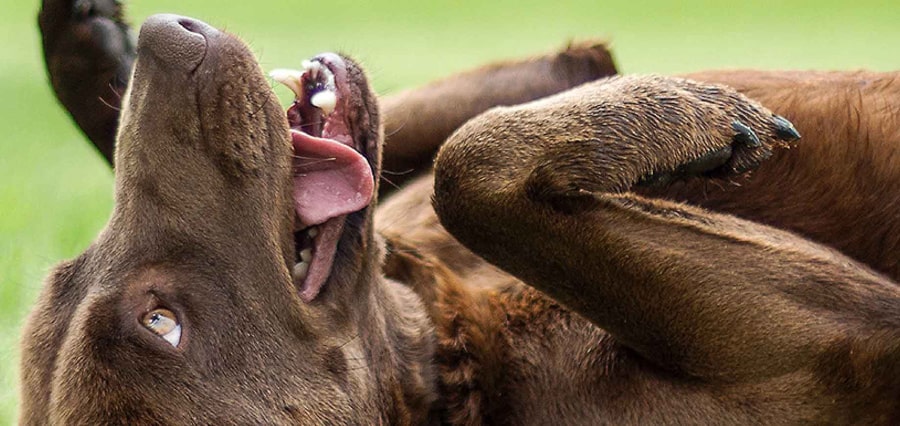
What to Buy When Adopting a Dog
Now that you’ve made a general plan for your new pup, it’s time to consider supplies! It’s best to get what you can beforehand, so you can focus on bonding with your pup once you adopt. You may not need to purchase all of these items at once, especially if you’ve already had a dog or if your shelter provides some of these supplies upon adoption. Call your shelter or check their website for a list.
Remember, adopting and caring for a dog is both an emotional and financial long- term commitment. It’s helpful to research or ask around about general costs in your area and talk to your shelter for recommendations to budget efficiently. If you plan to get a puppy, you may have to replace some items as your dog outgrows them. Here’s a general list of items you will need for a dog-ready home:
- A crate or kennel that is size-appropriate for your dog. There should be enough space for your dog to stand up and turn around, but not much more than that. If you’re unsure, your shelter can offer measurement-specific guidance.
- Dog-specific bedding your dog can stretch out on. Consider buying bedding that is easy to clean or replace if you think they may be prone to accidents or damages in the first few weeks.
- Separate food and water bowls for your dog’s size. Your dog’s bowls should be regularly cleaned and easily accessible at all times.
- Quality dog food and dog treats made with ingredients that have nutritional value. Each dog is different, and their dietary needs may change throughout their life. Deciding on the perfect diet and feeding schedule for your dog may take time, so be patient and transition foods slowly to not upset their stomach. Regardless of your dog’s breed, age or diet, look for food that contains quality ingredients. Be sure to choose foods that support your dog’s age; puppies need different nutritional values than older dogs. Supporting your new companion’s health starts with their food, so quality is key! High-value treats with lots of flavor are a great way to build a bond and encourage good behavior. Treats can also help support your dog’s gum health and help keep their teeth clean!
- A collar and leash that are age- and size-appropriate. Your dog’s collar should sit comfortably around their neck without being so loose it can slide over their ears or the base of their head when tugged. A collar that’s too loose could mean the dog wiggles out, and a collar too tight could be uncomfortable for your dog and lead to hair loss. For most dogs, you should always be able to comfortably fit two fingers between your dog’s neck and their collar — otherwise it may be too tight. Typically, a shelter will supply a simple slip-lead leash for you to use on the way home, but it always helps to have more than one leash and collar available, just in case.
- Grooming supplies like brushes, shampoos and nail clippers, which may vary in cost and type depending on your dog. Research what kind of at-home care your dog’s skin, coat and nails may need based on their breed(s). If you plan to hire a professional, research local trusted groomers and get a price quote.
- Housetraining and yard-waste supplies like puppy pads and dog waste removal bags for potty breaks. Enzymatic cleaners are a great tool to have on hand for housetraining because they break down waste and odor from accidents inside the house. Some dogs may need time to adjust to their new lifestyle, which may mean surprise accidents, so be sure to have supplies on hand for easy access!
- A variety of dog toys, be sure to consider your dog’s needs and stimulation level. For example, if you plan to adopt a dog with destructive tendencies, it may be a good idea to invest in a heavy-duty rubber chew toy rather than a stuffed squeaky one they may rip through in minutes. Dogs should have a variety of toys, like interactive toys (a tennis ball to fetch or a rope to tug) and stimulating toys (a rubber chew or squeaker toy) to stay entertained.
Other Dog Adoption Considerations
Before getting a dog, it’s a good idea to research vets in your area and prepare for the first visit. Ask your shelter or rescue if they have a recommendation, or search online for local reviews.
The first time you bring your pup to the vet will give you and your vet a better understanding of how to best care for them. At the first visit, your vet will examine and document your pup’s overall physical health, go over their medical records, discuss a care plan (like daily exercise goals, feeding schedule and parasite preventive regimen), administer vaccines, test for health complications and schedule a spay or neuter (if your dog is not already). The first vet appointment may vary slightly depending on your location, what kind of dog you adopt and at what age. Your vet is a great resource to help you best care for your new best friend. Ask questions, take notes and be sure to maintain a consistent checkup routine to help keep your furry friend healthy.
Your new dog may be anxious for the first few weeks after adoption. It’s normal for dogs to be overwhelmed by this big change, especially in the first three to seven days. This anxiety may intensify if they are alone or overstimulated. Regular exercise, bonding activities and consistent reinforcement of good behavior can help remedy your dog’s nerves as they acclimate and build trust. If you’re concerned about your new dog’s comfort level, bring it up with your vet at the first visit or a follow-up.
If this is your first time owning a dog, or if you just want to refresh your memory, consider reviewing the basics of obedience training, like “sit,” “stay,” “leave it” or “come.” There is a huge selection of free training resources online, or you can research local dog-training schools if you’d like to hire a professional. These skills are an important part of building trust and a safe environment for your pup.
Finally, it’s important to remember the long-term commitment that comes with adopting a dog. Whether you’re a first-time owner or veteran pack leader, your dog will rely on you for love and care for the long haul. This may mean unexpected expenses, time commitments or changes in lifestyle. In exchange, you get a rewarding relationship and loving companion. It’s normal to feel a little nervous at first, just like your dog may! But if you’ve done the research, budgeted accordingly and prepared your home, you’re already setting yourself (and your pup!) up for success.
What Dog Should You Adopt?
When you start your dog-adoption search, you’ll be greeted with great choices and options. What breed should you choose? What size dog is right for your home and lifestyle? Do you want an energetic, on-the-go dog or a couch potato companion? Are you up to daily coat maintenance, or are once-a-month baths and nail trims more your style? What mix of breeds could fit into your life? If you need inspiration, check out our Dog Breed Match Quiz and see which dog breeds may fit into your lifestyle and commitment level.
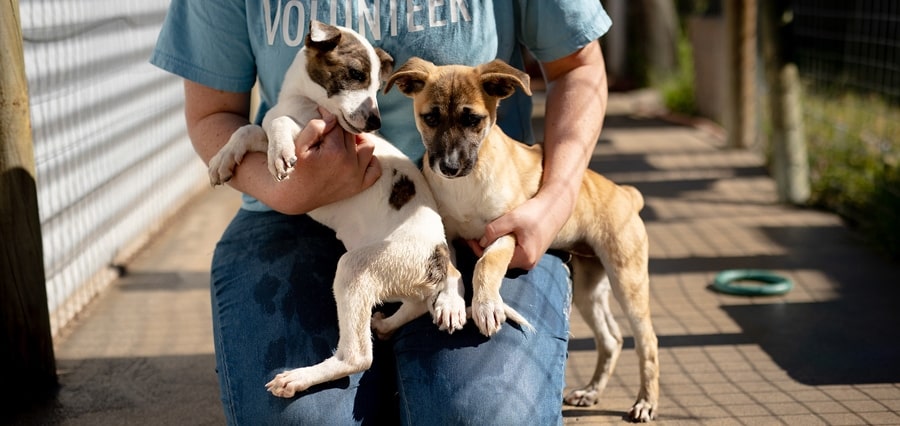
You should now have a good understanding of what will (and won’t!) fit into your lifestyle. Whether you’ve already decided a specific breed or you’re considering a long list of mixed breeds, each individual dog has its own special personality and disposition to consider. Breeds give us a good idea of what the dog will look and act like, but that doesn’t mean every dog will be exactly as their breed is described. That’s why it’s smart to also spend time with each pup you’re considering and take note of their personality. Are they outgoing and zealous, or timid? Do they hide from you or crawl into your arms? Ask the foster family, rescue or shelter about the dog’s unique personality to better understand how they will fit into your home in the long run. It’s also important for other pets or children in the home to spend time with the dog before adoption to be sure the dog will fit in well. Only you and fellow caretakers can decide which dog you connect with most, but being thoughtful with your research can get you closer to finding the perfect match.
What Can You Expect at the Dog Shelter?
Try not to go to the shelter expecting to find “your dog” the first time, because you may not — although it is difficult to leave without a new family member once you’re there! It’s important to find the right dog for you: one that fits your lifestyle, family dynamic and home. Be prepared to visit as many times as it takes. In the long run, it’ll be worth the wait.
Bring your lists or notes and a notepad and pen so you can write down pertinent information and important questions you have. Make sure to have your phone handy to take pictures; some shelters may not let you take pics of their dogs, but most will. Consider leaving the shelter with your notes and pictures and giving the decision more thought before going back to adopt a dog.
Keep in mind: Some shelter dogs are energetic or nervous because they’ve been confined, so don’t rule out a dog just because they seem hyper or overstimulated in that environment. If you can, ask the shelter to arrange some time to spend with the dog somewhere quiet and away from exciting stimuli to reduce distractions. You can also speak to volunteers or those who work at the shelter about the pup; many times, they are familiar with the dog and can tell you more about their typical behavior. Don’t be afraid to think it over and trust your gut.
It’s very easy to fall in love at first sight, but you should spend time with a dog before adopting them. You may like a dog very much, but that doesn’t always mean they will be the best and happiest fit. If a dog seems nervous in the shelter, this doesn’t mean they will feel the same way in a safe and loving home. It may take some time and deliberation, but your thoughtfulness will benefit you and whichever new best friend you pick for a long time to come.
Dog Adoption Questionnaire
After all of your searching and deciding, you’ve found a dog you think is meant for you. That’s awesome! Now you’ll start the application to adopt. Typically, this means alerting the shelter or rescue of your interest and providing them with information on why your home would be a good fit. This involves some paperwork, including the most important document, the adoption questionnaire, which usually contains questions such as:
- What are your reasons for adopting?
- How many members live in your household?
- How much time do you spend away from your home daily?
- Where will your dog be kept at night or when you are not home/at work?
- Do you have a yard? Is it fenced?
- Do you rent or own an apartment or house?
- Do you have any other pets? Are they spayed or neutered? Are they up to date on vaccinations?
- Have you ever dropped off a pet at a shelter? If so, what were the circumstances?
- Have you ever had pets? If so, what happened to them?
- Do you plan to spay or neuter your dog? (Many shelters do this automatically; some don’t.)
- Will you take them to dog-training lessons?
Your honest answers will help the shelter during their approval process. Keep in mind that the purpose of these questions is to place a dog in the best home for them, weed out people who will potentially abuse their dogs, and keep the chances of having the dog returned to the shelter as slim as possible. If you feel nervous during the application process, it helps to remember that the shelter wants to find this dog a happy home just as much as you do!
After the paperwork is complete, a shelter or rescue representative will sit down with you and ask questions based on the information you’ve provided. Use this time to ask any questions you may have.
Next Steps
If you’re approved, you'll pay the adoption fee or donation. You may be asked to sign an adoption agreement, which is like a contract. And then — unless they need to be spayed or neutered first — you can take your new dog home immediately!
Adopting a dog is a serious, years-long commitment, which is why the adoption process is so involved. Those who aren’t ready to adopt can always participate in other ways. Get in touch with your local shelter about opportunities, or check out PEDIGREE Foundation® (opens in new window) for ways to donate, volunteer and support rescues. You may also consider adding to your pack by fostering a dog instead. If you have second thoughts on adopting at any point, listen to your instincts. However, if you’re sure the dog you’re considering is the perfect match for you, get ready to enjoy years of long walks and snuggle sessions with your rescue pet at your side.

